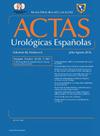铝行业工人患膀胱癌的风险:系统综述
IF 1.2
4区 医学
Q3 UROLOGY & NEPHROLOGY
引用次数: 0
摘要
目的总结1979年至2023年膀胱癌队列研究中铝生产过程中职业暴露的主要发现。材料和方法本系统综述按照PRISMA指南进行,并在PROSPERO注册。使用纽卡斯尔-渥太华量表评估研究质量。结果文献检索确定了24项队列研究,研究了铝生产工人膀胱癌的标准化发病率(SIR)和死亡率(SMR)。13项研究中有5项检查了SIR (95% CI), 16项检查了SMR (95% CI)的研究中有3项报告了铝生产工人膀胱癌风险的统计学显著增加。二级铝冶炼厂SIR最高,为2.85;95% CI: 1.23-5.62),提示风险显著升高。在铝还原厂,SIR为1.82 (95% CI: 1.59-2.07),而在Söderberg厂,SIR分别为1.69 (95% CI: 1.06-2.57)和1.4 (95% CI: 1.0-1.9)。对于整个铝厂,SIR为1.30 (95% CI: 1.10-1.50)。结果表明风险增加,最高的SMR为5.90 (95% CI: 1.58-15.1),表明二级铝冶炼厂的危害显著升高。其他值——铝冶炼厂的3.47 (95% CI: 1.25-9.62)和铝还原厂的2.24 (95% CI: 1.77-2.79)——也表明风险增加,尽管在统计上的确定性程度不同。国际癌症研究机构已将铝生产列为1类致癌活动,提供了与膀胱癌相关的有力证据。这些研究主要包括Prebake、Söderberg和铝还原厂的工人。一些研究结果表明,铝生产的不同环节存在显著但不同的风险。然而,该综述并没有明确证实在特定的与铝相关的职业中膀胱癌的风险增加。铝暴露可能影响这些工人一生罹患膀胱癌的风险。本文章由计算机程序翻译,如有差异,请以英文原文为准。
Riesgo de cáncer de vejiga en trabajadores de la industria del aluminio: una revisión sistemática
Objective
To summarize the key findings of occupational exposures during aluminium production in cohort studies on bladder cancer published between 1979 and 2023.
Materials and methods
This systematic review was conducted in accordance with PRISMA guidelines and registered in PROSPERO. Study quality was evaluated using the Newcastle–Ottawa scale.
Results
The literature search identified 24 cohort studies examining the standardized incidence (SIR) and mortality ratios (SMR) of bladder cancer among aluminum production workers. Five of the 13 studies examined SIR (95% CI) and three of the 16 studies that examined SMR (95% CI) reported a statistically significant increased risk of bladder cancer among aluminum production workers. The highest SIR was recorded in the secondary aluminum smelter (2.85; 95% CI: 1.23–5.62), suggesting a significantly elevated risk. In aluminum reduction plants, the SIR was 1.82 (95% CI: 1.59–2.07), while in Söderberg plants, it was 1.69 (95% CI: 1.06–2.57) and 1.4 (95% CI: 1.0–1.9), respectively. For aluminum plants overall, the SIR was 1.30 (95% CI: 1.10–1.50). The results indicate an increased risk, with the highest SMR of 5.90 (95% CI: 1.58–15.1), suggesting a significantly elevated hazard in the secondary aluminum smelter. The other values—3.47 (95% CI: 1.25–9.62) for the aluminum smelter and 2.24 (95% CI: 1.77–2.79) for the aluminum reduction plant—also indicate an increased risk, albeit with varying degrees of statistical certainty.
Conclusion
The International Agency for Research on Cancer has classified aluminum production as a Group 1 carcinogenic activity, providing strong evidence of its association with bladder cancer. The studies primarily included workers from Prebake, Söderberg, and aluminum reduction plants. Some findings indicate a significant yet variable risk across different segments of aluminum production. However, the review did not clearly confirm an increased risk of bladder cancer in specific aluminum-related occupations. Aluminum exposure may influence the lifetime risk of bladder cancer among these workers.
求助全文
通过发布文献求助,成功后即可免费获取论文全文。
去求助
来源期刊

Actas urologicas espanolas
UROLOGY & NEPHROLOGY-
CiteScore
1.90
自引率
0.00%
发文量
98
审稿时长
46 days
期刊介绍:
Actas Urológicas Españolas is an international journal dedicated to urological diseases and renal transplant. It has been the official publication of the Spanish Urology Association since 1974 and of the American Urology Confederation since 2008. Its articles cover all aspects related to urology.
Actas Urológicas Españolas, governed by the peer review system (double blinded), is published online in Spanish and English. Consequently, manuscripts may be sent in Spanish or English and bidirectional free cost translation will be provided.
 求助内容:
求助内容: 应助结果提醒方式:
应助结果提醒方式:


